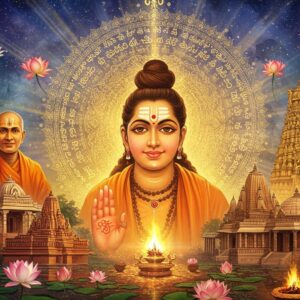
The history of ancient Bengal is a captivating narrative, deeply intertwined with the broader history of India and surrounding regions. This land, encompassing modern-day Bangladesh and parts of India like West Bengal, Tripura, and Assam’s Karimganj district, has been known by various names – Vanga, Gangaridai, Bangla – each echoing a unique chapter in its vibrant past.
Early Kingdoms and Empires
Bengal’s civilization boasts a rich lineage, dating back millennia. Unearthed remnants reveal a timeline marked by early city-states from the Vedic period, and even Stone Age relics dating back an astounding 20,000 years! The region housed prominent Janapadas (kingdoms) like Varendra, Suhma, Anga, Vanga, Samatata, and Harikela, each contributing to its unique historical mosaic. The very name “Bengal” finds its roots in the ancient Vanga Kingdom, celebrated in the Mahabharata for its naval prowess and overseas colonies. Known to the ancient Greeks and Romans as Gangaridai, Bengal’s powerful war elephant forces even prompted Alexander the Great’s retreat from India, a testament to its formidable strength.
Bengal’s destiny was often shaped by powerful empires. The Mahasthan Brahmi Inscription reveals its inclusion in the Mauryan Empire during the 3rd century BCE. Chandragupta Maurya’s unification brought prosperity and a strengthened naval force to the region. Later, in the 4th century CE, Bengal became a significant province within Samudra Gupta’s expansive Gupta Empire. The Gauda Kingdom, with its capital at the citadel of Gauda, saw King Shashanka, often recognized as the architect of a unified Bengali state, leave his mark. The Bengali calendar we use today originates from his reign in the 7th century CE. The 8th century witnessed the rise of the Pala Empire, a Buddhist dynasty that extended its influence across large parts of northern India by the 9th century. The Sena and Deva dynasties continued this legacy, ruling Bengal between the 11th and 13th centuries.
Flourishing Culture and Trade
Ancient Bengal wasn’t just about kingdoms and conquests; it was a vibrant hub of culture and commerce. Its lucrative cotton muslin textiles established robust trade routes with Persia, Arabia, and the Mediterranean. Bengal’s status as a thalassocracy and its role as a vital Silk Road entrepôt further solidified its economic prowess. This period witnessed the blossoming of the Bengali language, script, literature, music, art, and architecture, forming the foundation of the rich cultural heritage we cherish today. This era saw Bengal as a focal point of cultural exchange, blending local traditions with influences from across the trade routes, giving rise to distinctive art forms, literary styles, and religious practices.
Later Influences and Transformations
Starting in the 14th century, Bengal experienced the impact of Islamic conquests. Initially a province of the Delhi Sultanate between 1204 and 1352, an independent Bengal Sultanate emerged in 1346, ruling for two centuries with Islam as the state religion. The Mughal Empire integrated Bengal as the Bengal Subah after the Bengal Sultanate’s fall in 1576. Finally, the mid-18th century ushered in British colonial rule, marked by the British East India Company’s ascendancy after the Battle of Plassey in 1757, and their subsequent control over Bengal’s revenues.
The Harikela Kingdom: A Closer Look
The Harikela Kingdom, a lesser-known yet significant entity in ancient Bengal, deserves special attention. This kingdom, likely named after the term “Harikela” found in ancient inscriptions, flourished during the early medieval period amidst a network of city-states. Strategically positioned for maritime trade across the Bay of Bengal, Harikela served as a crucial link between the Indian subcontinent and Southeast Asia. Its influence extended beyond trade, playing a key role in the region’s political landscape and cultural evolution.
For those seeking to connect with their roots, the story of Harikela is a window into a rich past. At poojn.in, we understand the importance of preserving these ancient traditions. We offer a curated selection of authentic puja items, sourced responsibly and verified for quality. Whether you need clay diyas for Saraswati Puja, sacred Raksha Sutra threads, or a Bengali version of the Srimad Bhagavad Gita, our online store brings the sanctity of tradition to your doorstep. Explore our comprehensive collection of religious and cultural items at poojn.in and experience the convenience of online shopping while honoring our rich heritage.
Learning about ancient Bengal is not just an academic pursuit; it’s a deeply personal journey of connecting with one’s heritage. It instills a sense of pride, respect for our ancestors, and a renewed appreciation for the cultural wealth they bequeathed to us. This exploration helps us understand the interconnectedness of ancient societies, the flow of ideas, and the development of cultural and spiritual traditions. It invites us to embrace our history, learn from its lessons, and pass on this legacy to future generations.
For more insights into ancient Indian history and culture, explore our articles on Jyotisar Gurukul and Jyotisar Light and Sound Show. To understand the broader context of Hinduism, delve into our pieces exploring the history and origin of Hinduism.


